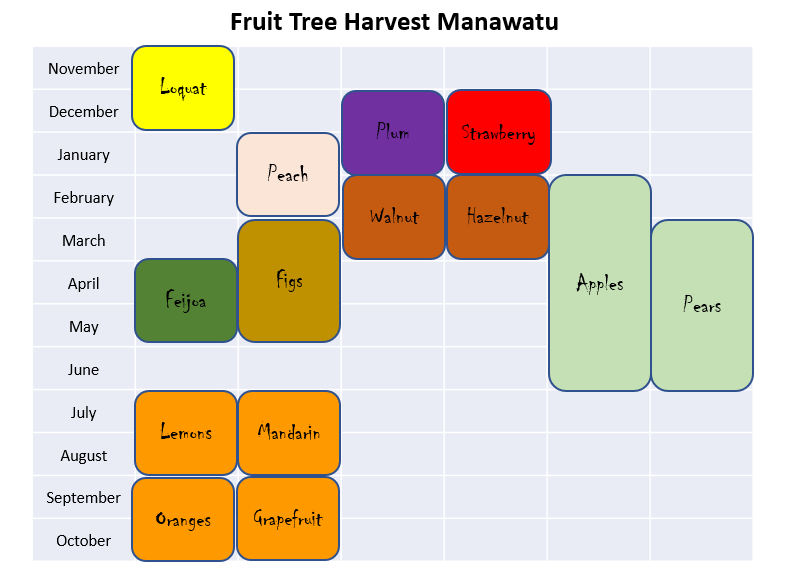Find out about our community orchards, and how you can play a part in looking after them for the future.
Every year we plant small orchards of fruit and nut trees in our parks and along the Manawatū River Shared Pathway.
These orchards have several benefits for everyone who lives in or visits Palmy, including:
- bringing people together
- providing nutritious food
- contributing to our sustainable city goals
- promoting community wellbeing
- strengthening community connections and interactions
- providing educational resources for children.
Fruit trees in parks are for everyone. Take only what you need. Leave some to share with others. Pick the fruit. Leave the tree.
How to know when the fruit is ripe to pick
- Apples and pears – easily drop in your hand when lifted
- Peaches and plums – plenty of colour, slight squeeze to feel softness
- Feijoa, walnuts, hazelnuts – fall from the tree
- Citrus – fully orange or yellow. No green
- Strawberries – red
- Loquat – yellow
If you’re not sure, taste one. Yuck – then leave. Yum – take a bag full.

We’d love for each of these orchards to have a community group or a group of dedicated neighbours who are prepared to care for the trees.
If you're interested, please get in touch with us. Email: communitydevelopment@pncc.govt.nz or phone: 06 356 8199
Water
Long and light. Water slowly, lightly and for a long time. This helps the soil hold onto water so plants can use it. In dry conditions water about one bucket per fruit tree, every three to four days.
Mulch
Add to wet soils. Add mulch when the soil is wet to hold the moisture in the soil.
Mulch can be anything that will naturally break down and leave no contaminants, such as bark and autumn leaves. Leave a gap around the tree trunk so the trunk can breathe (not rot).
Compost
Feed the tree! Spread compost 1m wide around the tree and under the mulch.
Reasonable requests for compost can be made to the site manager at Awapuni Resource Recovery Centre for community driven projects.
- Contact the Awapuni site supervisor email: andrew.smith@pncc.govt.nz or phone 021 285 3418
- Provide the following information: what the compost will be used for, where it will be used, how much you need and the approximate date and time it will be picked up. You will have 2 weeks after your request to pick up the compost.
- An email reply will be sent to confirm the compost you have discussed.
- Present the email confirmation at the weigh station entrance to the Awapuni Resource Recovery Park.
- Get directions at the weigh bridge where to collect the compost.
Prune
Leave this to Council. We will keep this to a minimum. Following an initial prune when they are planted, other pruning will include removing deadwood, stock wood and any crazy growing habits.
Spray
We will not spray the trees. If the trees have pests and diseases, or the tree is not doing well, we will replace it with a better hardier fruit variety.